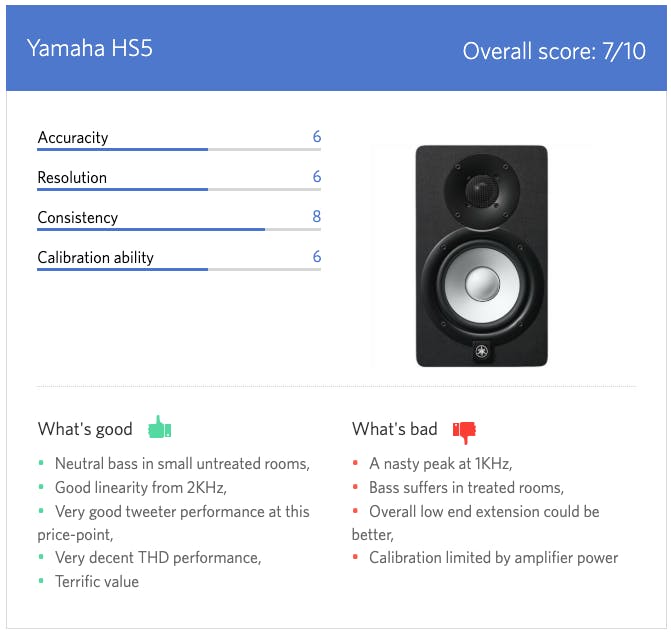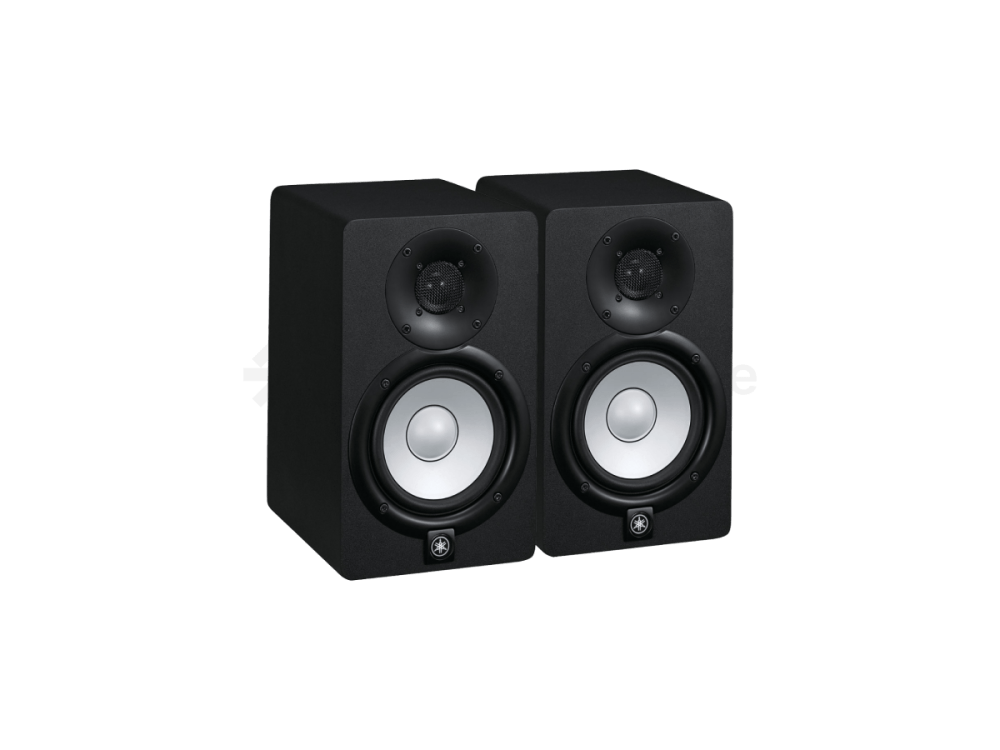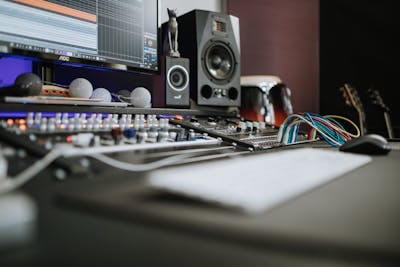Engineer or not just about everyone can recognize the ubiquitous white coned monitor that made musical history. Some have called the Yamaha HS series a successor to the legendary NS10, we are a bit skeptical about that. HS5 is a bass reflex studio monitor which means that it won’t be able to replicate the agile impulse response of an infinite baffle speaker which was the NS10. The HS5 might not be a legend yet, but let’s find out why it might become one due to the terrific value it offers.
Uncalibrated sonic performance
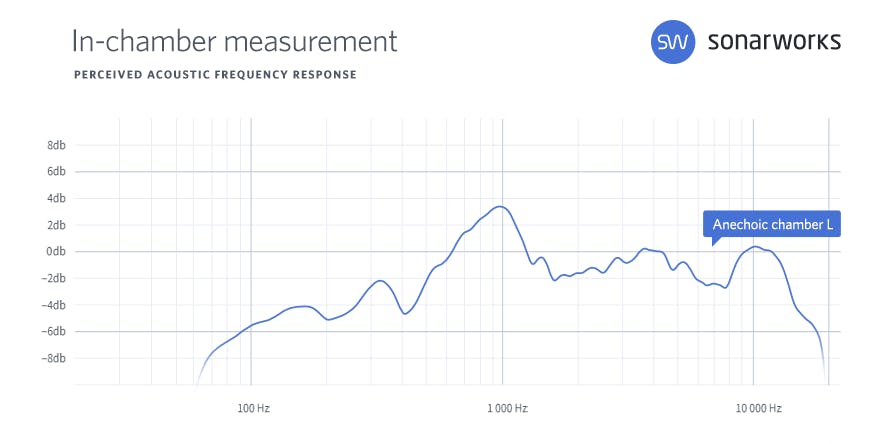
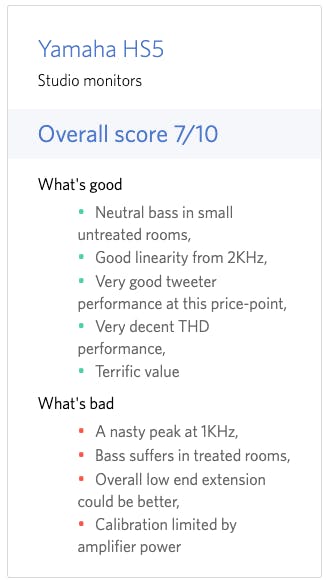
We brought the Yamaha HS5 to our anechoic chamber to get an idea about its frequency response and distortion characteristics. Anechoic chamber measurements are useful to find out the raw performance of a speaker, but usually they won’t tell much about what to expect once you put it in a real studio control room. Therefore to find out how the Yamaha HS5 performs in the real world we called our clients and went on a measurement tour across five very different studios where we measured the HS5 and tried out how it responds to Sonarworks calibration. The results were interesting to say the least!
Our first “studio” was an on-site recording bus, not the usual choice for many engineers, but rarely do these get measured and we wanted to know how calibration can deal with such a challenging environment. Due to the small internal volume it was much easier to get more bass out of the small HS5 woofers. The second stop was a typical apartment studio with no acoustic treatment and very reflective concrete walls standing close to speaker ports. Third control room we measured was somewhat treated and had non-perpendicular wall arrangement and some absorbant treatment. The last two rooms could qualify as higher caliber which is also reflected in the measurement graphs – usual room modes were greatly reduced.
As seen in the graphs, frequency response under 1KHz of the HS5 is mainly defined by room acoustics. Smaller rooms yield better bass expansion and even the best rooms were not free from various irregularities. In the following text we tried to outline what similarities we did find across all of the rooms so there’s a greater chance that our findings are relevant to you.
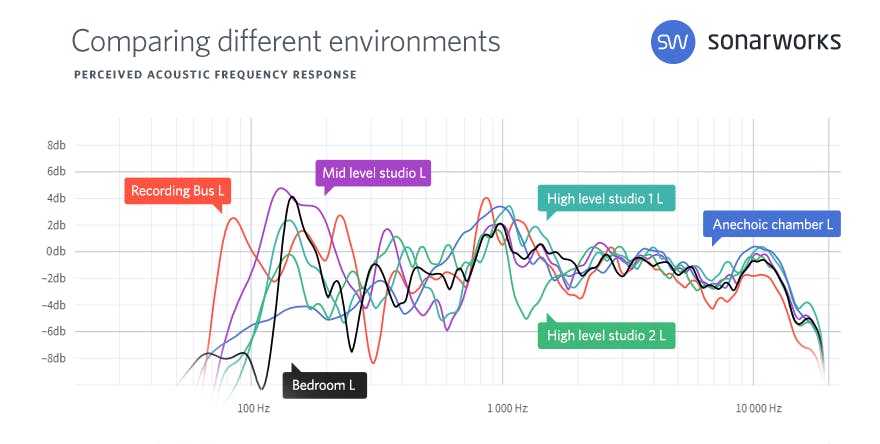
The bass region of the HS5 is curiously voiced – in anechoic chamber these speakers showed a rather early, but shallow roll-off starting at low midrange frequencies. The whole midbass to low midrange region sits at -3dB and at 80Hz starts rolling off very rapidly. This might seem bad, but to us it looks like a clever trick Yamaha has done to make these speakers sound more neutral in untreated rooms.
In all lightly treated rooms the HS5 showed very little bass peaking, compared to other ported monitors we’ve measured. Judging from how the HS5 did in the chamber and well treated studios we wouldn’t really recommend it for acoustically dead rooms.
In chamber the HS5 exhibited a +3dB peak at the critical 1KHz midrange. Sadly the coloration didn’t go away in all of the studios and resulted in a mid heavy sound. This coloration will make many instruments and voices sound too prominent and could result in mixes with sucked out mids. The good news is that the peak will make problems in the mid-band more noticeable, which is okay for a secondary monitor, but a dubious choice for a primary monitoring device.
High mids and treble showed very good linearity in all environments. The last octave has about -3dB rolloff which likely won’t be heard. All in all the tweeters did a good job of projecting a nice, reasonably wide sweetspot.
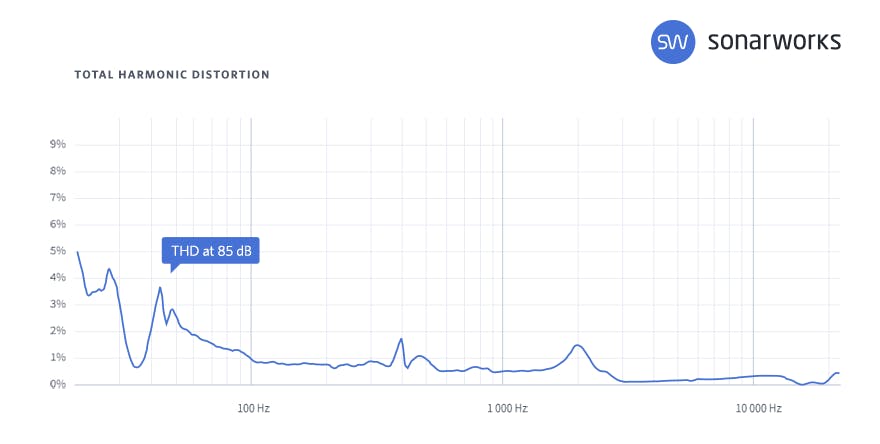
In terms of harmonic distortion these speakers did very well – most of the midrange sits below 1% with few small peaks most likely too narrow to be heard. THD starts to rise more rapidly around 100Hz which is where you should try to cross your monitors over to a subwoofer if serious bass monitoring is needed. This was also mirrored in how the speaker sounded – for the price asked detail resolution is quite good.
Calibrated sonic performance
In all listening environments the HS5 responded very well to Sonarworks calibration – the mid heavy sound transformed to a much neutral tonality.
Toggling the Reference 3 plug-in on and off showed how much almost all instruments changed due to the 1KHz peak. The bass hump was corrected back to neutral which made bass guitars and synthetic bass much more clear.
The unusually early bass roll-off on the HS5 might make these speakers harder to calibrate, especially in well treated rooms. The room gain mostly takes care of the bass, so the plug-in only needs to tame it down a little, but for HS5 in treated rooms bass boosting was needed. On higher SPL’s the 45W amp could start running out of steam. Maybe some of the larger HS series speakers would do better in this regard due to bigger woofers and more juice behind them.
Conclusion
The unusually early bass roll-off on the HS5 might make these speakers harder to calibrate, especially in well treated rooms. The room gain mostly takes care of the bass, so the plug-in only needs to tame it down a little, but for HS5 in treated rooms bass boosting was needed. On higher SPL’s the 45W amp could start running out of steam. Maybe some of the larger HS series speakers would do better in this regard due to bigger woofers and more juice behind them.
